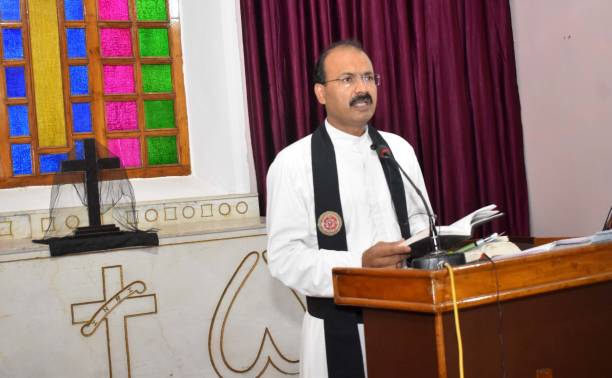Introduction
Every once in a while, the serene rhythm of church life gets interrupted by something unexpected—something that shakes the pews, sparks hallway chatter, and leaves many asking, “Why now? What does this mean for us?” The recent news of Fr Tomy Puliyan removed as pastor from church has done just that.
For some, it’s just another passing headline. But for others, it’s deeply personal. After all, when a spiritual leader steps aside—whether by choice, request, or force—the change leaves ripples far beyond Sunday Mass.
In this article, we’ll peel back the layers: the possible reasons behind such removals, how congregations cope, and what history teaches us about transitions in church leadership. Whether you’re a parishioner directly affected, a curious observer, or someone fascinated by the inner workings of organized religion, you’re in for an eye-opening read.
Why Would a Pastor Be Removed from a Church?
When people first hear that Fr Tomy Puliyan was removed as pastor from church, the knee-jerk reaction is often: “What did he do wrong?” But hang on—removal doesn’t always equal wrongdoing. There are multiple layers to consider.
1. Administrative or Policy Decisions
Churches, much like corporations, follow policies. Bishops, diocesan councils, and other governing bodies often make adjustments for strategic reasons. Sometimes pastors are rotated to prevent stagnation or to bring fresh energy into another parish.
2. Personal Health or Well-Being
Let’s face it—being a pastor isn’t exactly a 9-to-5 job. It’s 24/7 availability, emotional labor, and immense responsibility. Health concerns or burnout might lead to a temporary or permanent reassignment.
3. Parish Conflicts
No community is perfect. Disagreements between pastors and parishioners can escalate to a point where leadership decides a new face is necessary to restore harmony.
4. Allegations or Misconduct
Though difficult to talk about, allegations—whether financial, moral, or ethical—sometimes play a role in a pastor’s removal. Transparency and accountability have become crucial in today’s church landscape.
The Case of Fr Tomy Puliyan: Speculations and Silence
So, what’s the real story behind Fr Tomy Puliyan removed as pastor from church? Official statements, if any, are often cloaked in formal language—“reassigned,” “administrative decision,” “pastoral need.” The ambiguity leaves room for speculation.
-
Some parishioners may believe it’s tied to administrative reshuffling.
-
Others whisper about behind-the-scenes tensions.
-
A few wonder if health concerns are at play.
The truth? Unless the diocese comes forward with concrete details, much remains shrouded in mystery.
Ripple Effects: How Parishioners React
When a beloved pastor leaves suddenly, the congregation feels it. And reactions can range from confusion to outright frustration.
1. Emotional Fallout
People build strong bonds with their pastors. He’s not just the guy giving sermons—he’s the one baptizing your children, visiting your sick parents, and guiding your spiritual journey.
2. Trust Issues
When leadership doesn’t explain clearly why someone was removed, it can lead to mistrust in the institution. Parishioners start asking: “What else aren’t they telling us?”
3. Opportunity for Renewal
On the flip side, change sometimes breathes new life into a parish. A new pastor may bring different skills, new ideas, and fresh energy.
A Broader Look: How Churches Handle Leadership Changes
This isn’t the first time, and it won’t be the last, that a pastor has been removed or reassigned. Across denominations and cultures, patterns emerge:
-
The Catholic Church: Often uses a rotation system. Pastors are periodically moved to ensure variety and prevent over-dependence.
-
Protestant Churches: Tend to allow congregations more say in hiring and firing, though controversies still arise.
-
Non-Denominational Churches: Leadership shifts can be abrupt and personality-driven, as governance varies widely.
Behind the Scenes: The Role of Bishops and Church Councils
A common misconception is that pastors operate independently. In reality, bishops and church councils hold significant sway. Their roles include:
-
Evaluating the health of parishes.
-
Addressing complaints or conflicts.
-
Making administrative decisions for the “greater good.”
-
Ensuring alignment with doctrinal standards.
When Fr Tomy Puliyan was removed as pastor from church, it’s safe to assume multiple voices were involved in the decision.
Lessons from History: This Has Happened Before
If you look back through church history, you’ll find dozens—if not hundreds—of similar situations. Consider:
-
The Reformation Era: Entire swathes of pastors and priests lost positions due to theological clashes.
-
Modern Scandals: Allegations of misconduct have led to mass removals, reshaping trust in religious institutions.
-
Routine Transitions: Even in calm times, churches make pastoral shifts every few years.
So, while it feels personal and unique, the removal of Fr Tomy Puliyan sits within a long tradition of church leadership transitions.
How Should Parishioners Respond?
It’s easy to fall into gossip or bitterness, but that rarely solves anything. Instead, communities can use moments like this to refocus.
Practical Steps:
-
Stay Informed: Ask questions, but rely on official communication rather than rumors.
-
Support Each Other: Emotional fallout is real; lean on community bonds.
-
Give the New Pastor a Chance: Change can feel uncomfortable, but it also brings opportunities for growth.
-
Pray for All Involved: Whether or not you understand the reasons, offering spiritual support is always a path toward healing.
Common Questions About Pastoral Removals
1. Does removal always mean scandal?
Not at all. Sometimes it’s simply administrative rotation or health-related.
2. Will Fr Tomy Puliyan serve in another church?
Most likely, yes. Pastors are often reassigned rather than retired unless health or serious allegations prevent further ministry.
3. Can parishioners influence the decision?
It depends on the denomination. In Catholic contexts, decisions typically come from higher authorities with little parish input.
4. How long does transition take?
It varies. Sometimes the new pastor arrives almost immediately; other times, an interim priest steps in until things stabilize.
5. What happens to the legacy of a removed pastor?
Usually, their contributions remain acknowledged—baptisms, marriages, and homilies are part of parish memory, regardless of how their tenure ended.
Conclusion: A Moment of Uncertainty, A Call to Reflection
The news of Fr Tomy Puliyan removed as pastor from church is more than just a headline—it’s a human story, woven with emotion, tradition, and uncertainty. It challenges us to think about leadership, transparency, and the bonds that hold faith communities together.
Yes, change can feel unsettling. Yes, unanswered questions can nag at the back of our minds. But at the end of the day, faith communities aren’t built solely on pastors; they’re built on people, relationships, and shared belief.
So, whether you’re mourning the departure of a familiar shepherd, curious about the bigger picture, or just trying to make sense of it all—remember: transitions, while painful, often pave the way for renewal.








Leave a Reply